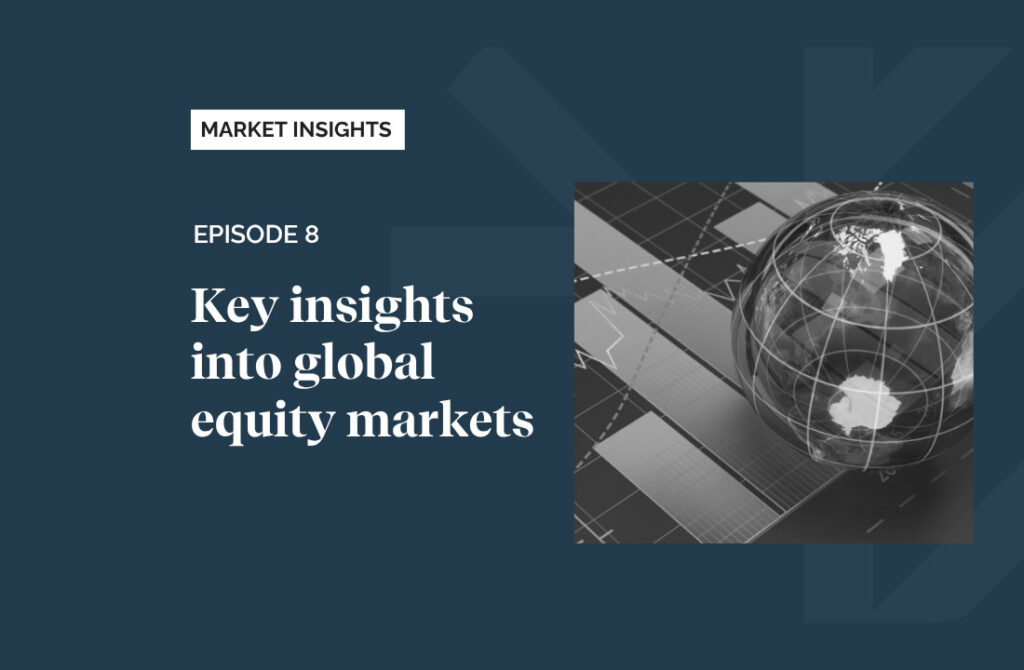Topics
Transcript
In The UK, Prime Minister, Stama, is struggling with his popularity, and his approval rating is at lows. In Romania, we’ve seen that the courts have decided to scrap the most recent election result. In South Korea, we’ve had a few hours of martial law. And then more recently in Syria, we’ve seen the regime of Bashar al Assad fallen after a few decades at the helm. The question is, how does these things impact the global economy and also what’s happening in different regions?
Remember, there’s still a war ongoing in Russia between Russia and Ukraine, and also there’s still tensions in The Middle East. Now first of all, safe haven assets typically do well in this environment. Think about US treasuries, US dollar, even some digital assets have done well recently. Gold has done well. And so these safe havens, you know, should receive a bit in when a while these unstable conditions continue.
Also, countries like South Africa and emerging markets does appear now a little bit more stable on a relative basis to what’s happening in some of these regions. In terms of the regions for Europe, it does put the year the euro on the pressure relative to the US dollar. And until some of that political crisis has resolved to some extent, which we only expect will happen in the first, maybe second quarter of next year, the US dollar will remain, you know, fairly strong. Also, Europe will most likely be required to spend more on fiscal over coming years, and this will continue to, I guess, put pressure on the euro. So what are the implications of these events?
First of all, safe haven assets seems to be doing well. Think about the US dollar, gold, treasuries. They should be doing well in this environment of instability. Also, emerging markets in South Africa suddenly looks a lot more attractive relative to some of these regions. When we look at the impact on specific regions, for Europe, it does put the euro under pressure.
And it will most likely put Europe under pressure to do more fiscal spending. The event in Syria has definitely put Russia and Iran under more pressure. For Russia, it means that they’re most likely to do a deal to have a ceasefire with Ukraine in the near future because they are under pressure. And for Iran, we see different scenarios potentially playing out. One, that Iran may decide to up the aggression relative to Israel.
The second scenario is that instability within the country actually increases. Remember, the regime in, Iran is also under pressure due to economic weakness in the country. And the third one is potentially that it could be a deal between The US and Iran around nuclear and Israel. So it remains a very unpredictable environment for the region. And for Syria itself, it probably means that there will be a lot of instability in the country for some time to come.
Now let’s look at The US economy and The US labor market. Our view has been that The US economy will slow over time as it still faces high interest rates and also reduce tailwinds for the consumer. The labor market is key in figuring out exactly when The US economy will face a more aggressive slowdown. And within that, the null fund perils report is a very key indicator to show us the strength and the health of The US economy. Now the most recent non farm payrolls report showed that about 227 jobs were added in the economy last month.
A Little bit more than the market was expecting. One final factor to take into consideration when thinking about the labor market is immigration. Now The US saw high levels of immigration over the last few years. And while labor demand has been very strong and labor supply has been weak but rising, as long as you keep labor supply adding to the economy, you can actually have economic growth. And so immigration has actually supported economic growth over the last few years.
Now if Trump comes in and his policies to curb immigration materializes, it may slow down the pace of immigration, which ultimately may slow down, therefore, the pace of growth and may add a little bit of inflation also to the dynamics. However, the unemployment rate slightly increased from 4.1 to 4.2%. Now we believe that’s enough to allow the Fed to continue to cut interest rates. Other labor market indicators also confirms the view that the economy and the labor market is slightly slowing. And so we believe as this plays out that ultimately the Fed will be forced to cut more than what the market is currently anticipating.
The Fed also recently said that they may have some time and that we should be patient around trade cuts. And the reason for that is because their preferred measure of inflation, which is the core PCE measure, seems to be sticky and would likely remain sticky at these levels for the next few months at about 2.83%. We believe that core PCE will only start to drop again sometimes towards the end of the first quarter of next year, which will again allow the Fed to continue to cut interest rates. However, there’s also some risk scenarios at play here. And the risk scenario is that The US economy remains robust, that wage inflation remains fairly sticky, and that the Fed feels that they wouldn’t be able to cut rates and that the next move or that the Fed decides sometimes next year that they would need to hike in the streets again.
That is not our base case, but that is a risk scenario which we keep monitoring because that would put emerging market assets under pressure again. That’s all all for today. See you next time.
FAIRTREE INSIGHTS
You may also be interested in
Explore more commentaries from our thought leaders, offering in-depth analysis, market trends and expert analysis.

Macro Pulse Episode 21
In this episode Jacobus discusses SA equities, SA bonds and the appreciating of the US dollar.

Fairtree Market Insights with Karena Naidu | Episode 8
In this episode, we dive into our Chinese exposure, exploring what’s happening with the major e-commerce players in China. We also take a closer look at the broader emerging markets space, unpacking key trends and where we’re seeing potential growth.

Macro Pulse Episode 20
In this episode, Jacobus discusses major events leading up to year-end, recent US court cases, and the rise in long bond yields.
About you…
By proceeding, I confirm that:
- To the best of my knowledge, and after making all necessary inquiries, I am permitted under the laws of my country of residence to access this site and the information it contains; and
- I have read, understood, and agree to be bound by the Terms and Conditions of Use described below.
- Please beware of fraudulent Whatsapp groups pretending to be affiliated with Fairtree or Fairtree staff members.
If you do not meet these requirements, or are unsure whether you do, please click “Decline” and do not continue.




